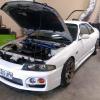R33 Rb30 Conversion
Announcements
-
Similar Content
-
Latest Posts
-
fair call about sau.com.au really, only the pics give it away
-
Hey Sau Fam, got a few goodies laying around not easy to find in this condition these days! Skyline R32 GTS/GTST RH Front Corner Indicator With Wiring Loom $225 Skyline R32 GTST (Driver Side) Front Corner Indicator - RH No Broken Lugs $240 Skyline R33 Sedan TailLights Series 1 (KOITO) Tail Lights S1 (4 Door) $750 Nissan Skyline R33 Sedan Tail Lights (Series 2) 4 Door R33 TailLights S2 $850 IMPUL (Long Version) Rare Discontinued Shift Gear Knob – M10x1.25 $280 IMPUL Discontinued Short Shift Gear Knob M10x1.25 $260 Nissan Skyline R33 Floor Mats Full 5 Piece set $300 Skyline R33 GTS/GTST Front (SILVER) Grill With S Badge Series 1 (NO BROKEN LUGS) $400 Skyline R33 GTS/GTST Front (BLACK) Grill With S Badge Series 1 (NO BROKEN LUGS) $400 📍Located: Melbourne - (Western suburbs) 🌎 Australia & International Postage Available At Buyers Expense. DM me if interested
-
It possibly could. But the problem he has is that the existing paperwork for the car says it's Mines.
-
Knowing how slow their other compressors are that connect to the cars battery, you'd want to hope it's one hell of a slow leak!
-
So why can’t the front pipe just be listed as custom make? why does everything have to have a brand name to it? or if you have bought the car like this and have no idea about anything at all or no knowledge what so ever of parts how are you supposed to inform them of what it is you have exactly?
-








Recommended Posts
Create an account or sign in to comment
You need to be a member in order to leave a comment
Create an account
Sign up for a new account in our community. It's easy!
Register a new accountSign in
Already have an account? Sign in here.
Sign In Now